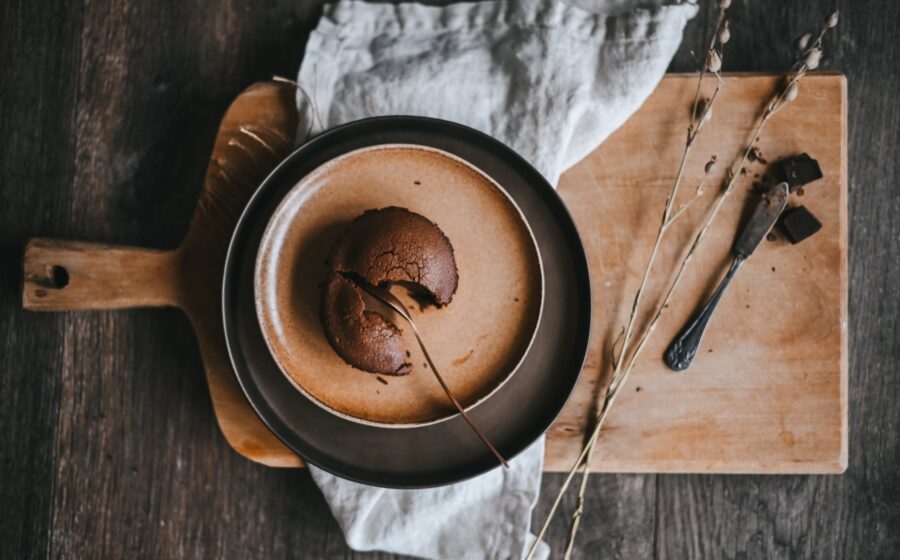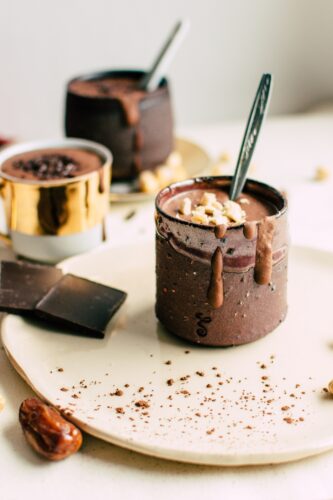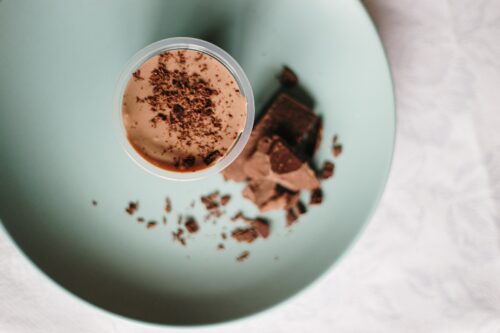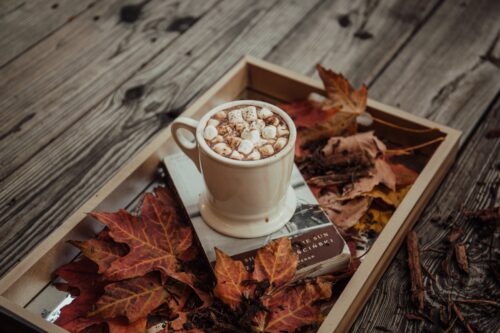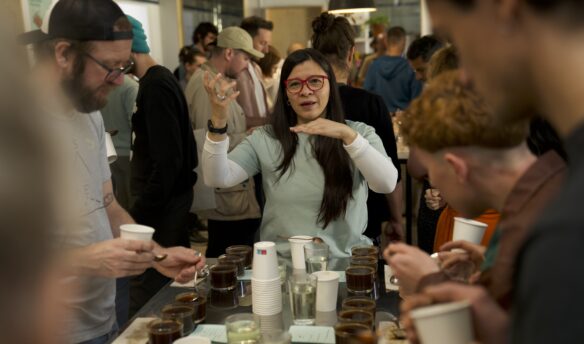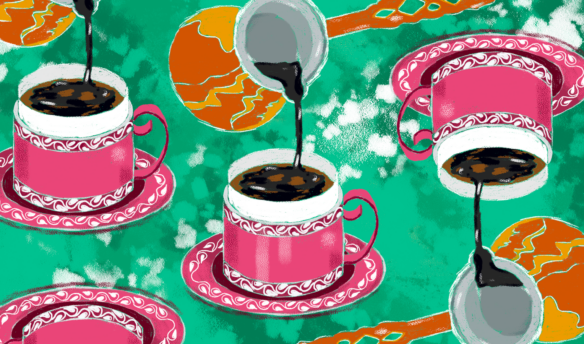When Etienne Wilk opened the doors to Ground Central last November, quality was top of mind, and Wilk promised himself that it would run throughout the menu. “We weren’t going to put anything on the menu that was ‘just good enough,’” Wilk says. “We wanted to find the absolute best.”
While he acknowledges that coffee commands the most attention at his upstart New York City café, Wilk has diligently executed his pledge to celebrate every product, including hot chocolate. He teamed up with Jacques Torres Chocolate, run by a local pastry chef of the same name, and began crafting a hot chocolate drink that would excite patrons and inspire repeat business. “Chocolate means pleasure, and that’s what I want to deliver with my hot chocolate,” says Wilk, who calls Ground Central’s hot chocolate an early success at the store.
For café operators like Wilk, recognizing hot chocolate’s potential can spark traffic and sales, especially given consumers’ still-surging interest in product sourcing. “Specialty coffee places great focus on sourcing the bean and educating consumers on taste profiles,” says Michael Szyliowicz, chocolatier of Mont Blanc Gourmet, which makes the GoodDrinks product line. “Consumers are beginning to understand differences in coffee flavor profiles, and being able to learn about the chocolate that goes into their hot chocolate is a natural progression of what we have seen with coffee and also wine.”
Not Just For Kids
Like Szyliowicz, Darin Teal, founder of Gosh That’s Good and Java Crew, has similarly noted swelling interest in hot chocolate among cafés and consumers. He believes this is primarily driven by the general trend toward higher-quality cocoa products and chocolate’s position as comfort food.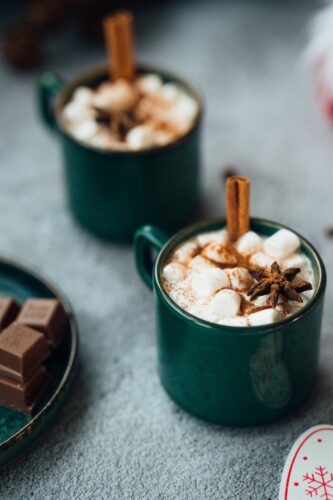
For suppliers as well as cafés, the accelerated interest is welcome news. In 2013, Ghirardelli Chocolate noticed a “significant increase” in its hot chocolate sales, according to vice president of food service Chris Eklem. “The potential and sales opportunities with hot chocolate are only going up,” he says. “Though coffee shops understandably focus on mochas, lattes, espressos, and more, they also don’t want to overlook hot chocolate’s ability to be a driver of sales, particularly for those who don’t want caffeine or those who will share the drink with a child.”
Devorah Freudiger, director of training at Equator Coffees in Mill Valley, Calif.—a longtime wholesale roaster that opened its first retail location last year—says hot chocolate has been a hit at her café following the morning work rush. “Hot chocolate and vanilla steamers are our options for kids who come in with their espresso-fiend parents,” she says.
While cafés have primarily adopted an innovative mindset around coffee, iced drinks, and other beverages, hot chocolate has not always received the same creative attention. Yet, offering a differentiated hot chocolate experience allows cafés to stand out in a competitive marketplace while also providing a beverage that crosses times of day and customer groups. “Not everybody who walks into your café wants caffeine,” Eklem reminds us.
When offering hot chocolate to their guests, Teal says cafés should deliver something high-end and high-quality. “This should be your goal: an adventure for the taste buds and not something you will find in a hot chocolate packet you buy at the supermarket,” Teal says.
So how does a café turn a ho-hum hot chocolate into a distinctive drink that pleases customers?
Invest in a Quality Chocolate Base
First, the pros agree: Ditch the pre-made instant mixes in favor of quality, high-cocoa-content chocolate powder, if not real chocolate itself.
Over the last eight years, Joe Evans, owner of Nobrow Coffee Werks in Salt Lake City, has rotated through various hot chocolate bases and mixes. Whatever Evans did, Nobrow’s hot chocolate sales languished. “It’s been constant experimentation for us as we’ve tried to figure out the best hot chocolate we can offer,” he says.
Recently, Evans went to Salt Lake City’s emerging artisan chocolate scene to land his latest vendor, Solstice Chocolate. Evans says the chocolate startup is doing the type of focused artisan work commonplace in coffee. For Nobrow’s hot chocolate, Solstice grinds its bright, acidic Madagascar chocolate bar. “Now we have a partner that’s like-minded and as fanatic about their work as we are about ours,” Evans says. “Best of all, we’re seeing results and serving a hot chocolate drink treated the same way as our espressos and coffees—something as dynamic and lively as any of the espressos we pour.”
Looking to capitalize on café owners’ growing desire to use real chocolate, Ghirardelli offers dark chocolate mini chips, a high-grade, premium chocolate that cafés can use to produce a more decadent offering. For those favoring a less intense flavor, the California-based supplier also provides its sweet ground chocolate, a Ghirardelli staple since 1852. “Depending on what the operator wants to do, there are a number of directions to go,” says Eklem.
Szyliowicz has noted rising demand for single-origin chocolates, which prompted GoodDrinks to add a single-origin cocoa powder from Peru to its product line, which already includes a single-origin chocolate sauce from Ghana.
Show the Product
Specifically for those using real chocolate, showing the product can add a level of artisanal flair and arouse consumers’ senses.
Eklem says cafés can merchandise the product so guests ordering a hot chocolate can see the scooping of chocolate pieces and the drama that goes into production. “This allows customers to see the inherent quality of the drink, and making it feel more authentic and handcrafted goes a long way,” Eklem says. “For a specialty coffee shop, you’re selling the senses as much as the quality of the ingredients.”
Find a Partner for Chocolate
By pairing chocolate with exciting flavors, such as chipotle or lavender, cafés have keyed into third-wave hot chocolate options.
Some cafés add spices, while others turn to hazelnut or vanilla. Meanwhile, many cafés punch their hot chocolates with cinnamon or peppermint during the fall and winter seasons. “Rather than thinking of the drink as a straight hot chocolate, think about ways you can infuse different flavors into the cup,” Eklem says, adding that cafés with the proper licensing might also add Irish cream or other liqueurs to attract a different demographic.
When it comes to partners for chocolate, Teal says baristas can’t be afraid to think creatively, specifically pointing to those using Gosh That’s Good’s Bev Buz flavorless energy as a hot chocolate mix-in. “The finished product is a delicious hot chocolate with the same buzz you would get from a cup of coffee,” Teal says.
For others, back-to-basics is the way to go. Equator’s Freudiger says her crew considered using cinnamon or fresh mint in its hot chocolate but bypassed those thoughts in favor of simplicity. “In the vein of farm-to-table restaurants, when using quality ingredients, you don’t need to dress them up to make them more desirable,” Freudiger says. “We let our simple ingredients speak for themselves.”
Accessorize the Whipped Cream
Topping hot chocolate with a delicious whipped cream can generate a distinctive, memorable taste. Cafés might explore creating a custom whipped cream, perhaps a topping infused with a flavor such as caramel or white chocolate.
After that, Szyliowicz says marshmallows, sprinkles, and candy pieces all add fun to the basic hot chocolate covered in whipped cream. For example, GoodDrinks offers Peppermint Poppitz, a mint-flavored take on Pop Rocks candy.
Consider Market Segmentation
Equator has two different hot chocolates: one catered to adults and another to kids. The adult version features Equator’s not-too-sweet syrup, a product crafted to complement the coffee taste in the shop’s mochas. “By not making our syrup too sweet, our standard hot chocolate is nice for a grown-up palate,” Freudiger says.
The café then offers a kid’s hot chocolate catered to youthful tastes. In the warm steamed-milk drink, Equator’s crew sneaks in a little bit of the café’s vanilla simple syrup. “A bit sweeter and with a little vanilla, this hot chocolate tastes more like a kid’s candy bar than a fine chocolate confection that a grown-up would enjoy,” Freudiger says.
Seek Special Talents and Information
Like coffee, chocolate also has artisan specialists who live and breathe the product. Café owners would be wise to tap those insights to produce dynamic hot chocolate drinks.
For instance, Wilk has asked Jacques Torres Chocolate folks to train his Ground Central staff. “Having a great product is one thing, but using that great product to make a satisfying drink is quite another,” says Wilk, who has challenged the chocolate supplier’s team to deliver inspired new recipes for every season. “I want to leverage their talents as much as possible because they are the pros, and their guidance will help us please our customers.”
Daniel P. Smith is a writer based in Chicago. Cover photo by Photo by Gaelle Marcel.
This article was originally published on February 21, 2014 and has been updated to meet Fresh Cup’s current editorial standards.



